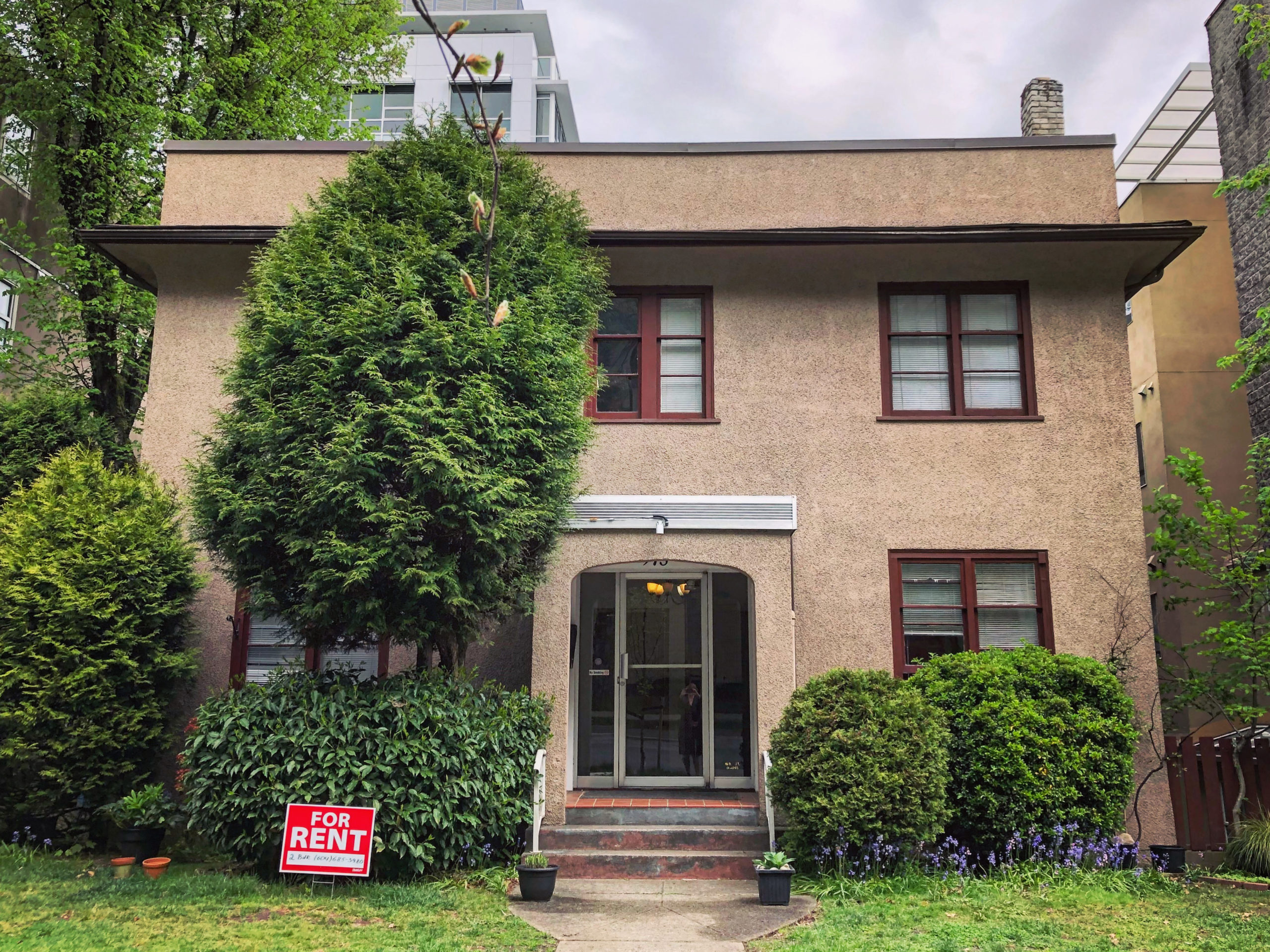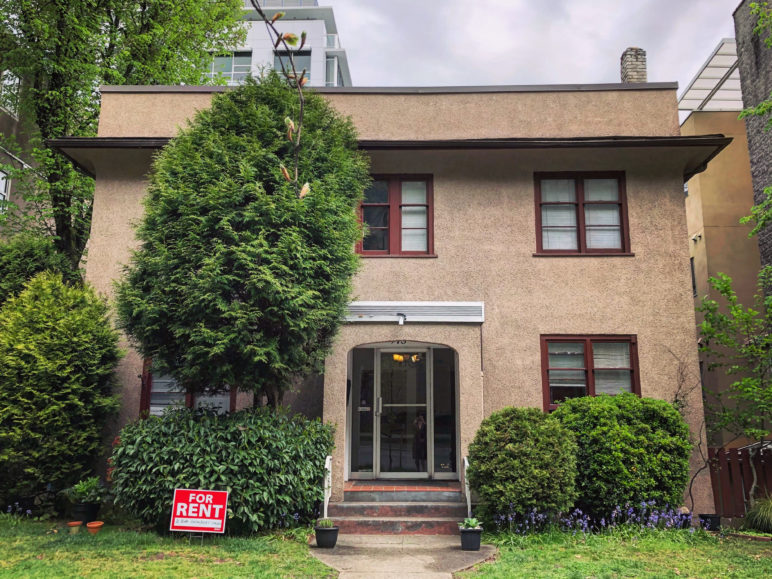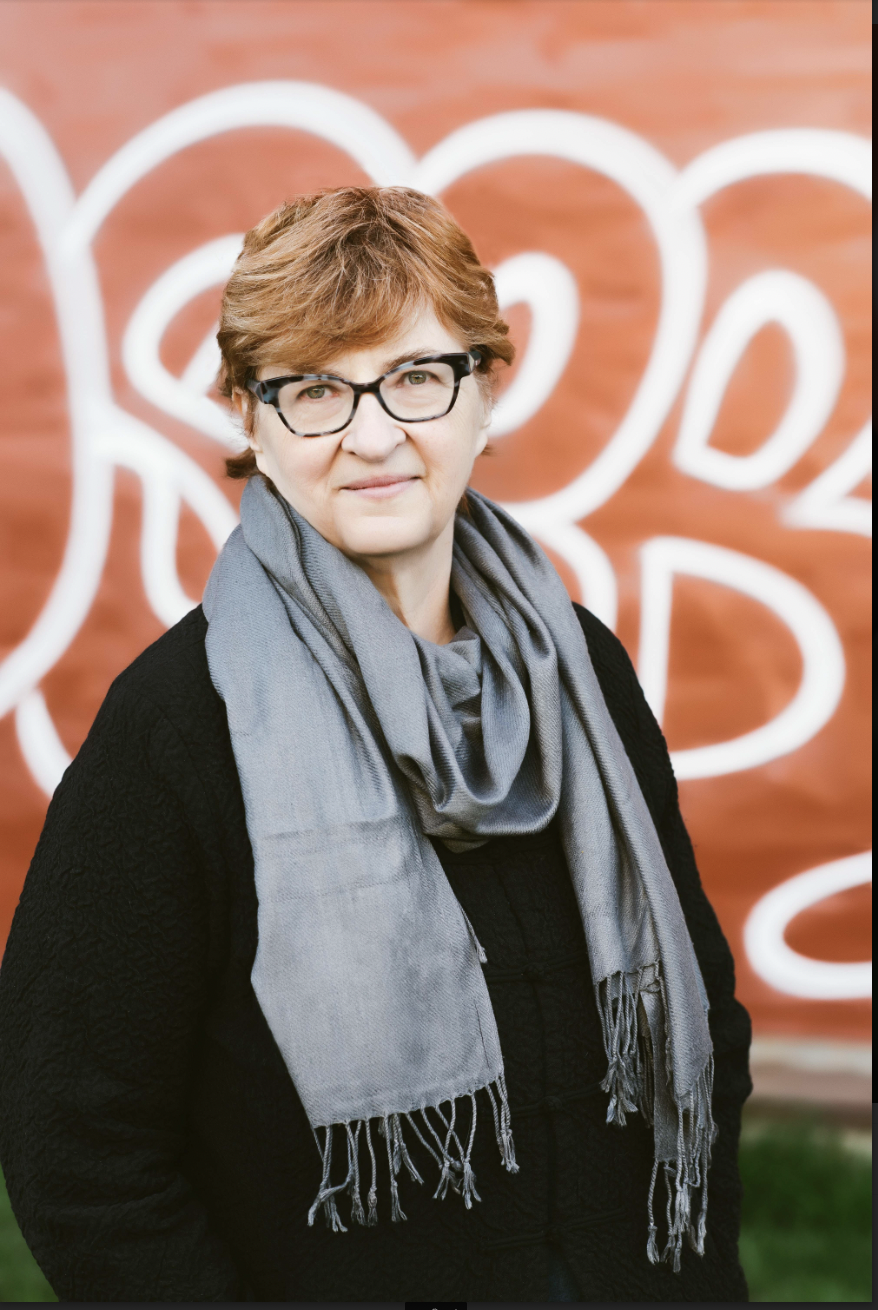Rachael Bourbeau and her partner both lost their restaurant jobs in British Columbia’s capital city the same day: March 17.
In a moment, they went from earning about $40,000 a year between them—and a reasonable ability to pay $1,150 a month for the basement suite they rent in a quiet neighbourhood of Victoria—to zero income.
But Bourbeau was able to apply in early April for a $300-a-month rent subsidy that the province of BC is providing for the next three months as pandemic relief.
She and partner Jackson McDonald are also getting $450 of credit from the province’s electricity company, BC Hydro, which means she doesn’t have to worry about that bill for several months.
And both are getting the $2,000 a month federal Canada Emergency Response Benefit, as well as, they expect, the $1,000 one-time provincial benefit, for which applications opened in the third week of April.
That’s all a relief, said the 24-year-old Bourbeau. The rent subsidy isn’t much, especially because she didn’t fudge the application to say she and McDonald are roommates and not a couple so they could get $600, as several of their friends did.
But it’s something.
“It opens up $300 to pay other bills,” she said.
The province’s rent supplement for certain categories of renters is an unusual approach, not matched anywhere else in Canada or the US, as governments craft different variations on the kinds of help they’re offering. Over recent years, BC’s rents have zoomed up while the vacancy rate has hovered near zero. Rent is a hot political issue. (BC limited rent increases to the rate of inflation almost two years ago but landlords can increase rent by any amount between tenancies.)
The program is getting heavily used. BC tenants have filed more than 45,000 applications since the program opened April 9, though many landlords, who get the money deposited directly to their accounts, say they haven’t received many checks yet. Only 3,000 had gone out by April 23.
The rent-subsidy program was accompanied by a provincial order prohibiting rent increases for April, May, and June, and a moratorium on evictions for the same period, barring unusual circumstances like a domestic violence problem.
Challenges with getting renter relief to those who need it
While those getting the subsidy appreciate it, along with the other relatively generous measures available from the province and the federal government in Canada, the new program has also raised a variety of concerns.
One is that it is too restrictive, both for people who are poor and for those who exceed the income limits but still need help.
“We know the people hit hardest are seniors, people on fixed income, low income, no access to the internet, with English as a second language. The amount of pieces of paper and proof, it’s quite a bit for people to get,” said David Hendry, who works with the Vancouver Tenants Union.
The program requires people to provide proof of their income in 2019, proof that their rent exceeds 30 percent of that income, proof that they’re eligible for the emergency benefit or that they’ve lost a defined portion of their previous freelance income, and information about their landlord.
All those requirements can be daunting for lower-income people but also shut out others.
Brendan Ladner, 40, runs three restaurants in Vancouver with his wife, all of which are closed. They pay $4,400 a month for the small house they rent for themselves and their two children in the city’s West End.
They’re getting the emergency benefit and the provincial payment, but aren’t eligible for the rent subsidy. It’s limited to singles or couples without dependents who made less than $74,000 in 2019, less than $113,000 for those with children. They made more than that last year.
So the family is ineligible for the maximum of $500 a month for those with dependents, something that infuriates Ladner as he scrambles to pay rent for both his businesses and his home.
“Young adults and millennials are bearing the brunt of this,” he said. “Right now, it’s my generation who are being asked to take on further debt.”
Many people his age are still renting, even with relatively high incomes, because they can’t afford to buy at Vancouver’s sky-high prices.
Or, if they did manage to get into the housing market, they’re stretched and often relying on a basement rental to make the mortgage—with tenants who might have decided to move out because they lost their job, or have asked to pay partial rent, or are not paying rent at all because of the current no-eviction order.
How much of the rent subsidy goes to landlords?
Ladner also touches on another debate going on: whether BC’s program is really a subsidy for landlords or for renters.
“Right now, I’m seeing landlords expect to receive at least 70 percent of their current income.” Those are the early numbers on which proportion of renters made their payment on April 1 in BC.
A 30 percent drop in landlord income is severe, but it’s far better than the total loss faced by businesses forced to close down such as Ladner’s. He believes the sizable government payments through the federal and provincial emergency money, along with the rent subsidy have softened the blow to landlords.
But Ladner thinks the unique group of small-bore landlords that the Vancouver real-estate market has spawned need even more support to stay afloat than they’re currently getting. And he’s promoting the idea of a “rent relief bank” to help them with deficits.
While the 41 percent of renters in the Seattle region finds rentals mainly provided by large companies running purpose-built apartment buildings, the Vancouver region is very different.
For all kinds of reasons ranging from tax incentives to insurance and legal issues, apartment-building has been a steady business in Seattle. But, in BC’s Lower Mainland, apartment builders transformed their businesses in the 1970s and 1980s almost exclusively into condo construction.
As a result, a lot of renter supply came to be provided through secondary suites in houses (known as mother-in-law flats in the US), and in investor-owned condos.
The 2016 census in Canada showed that metropolitan Vancouver had 348,700 renter households, with about 111,000 in purpose-built market rentals and another 46,000 in subsidized housing, according to numbers pulled by Vancouver housing-statistics expert Jens von Bergman. (Those in social housing pay according to income, so they are somewhat protected.)
That means there were around 192,000 renter households in the secondary market of condos and “garden suites,” as they’re sometimes called, of every description. Statistics from Canada Mortgage and Housing in October 2019 indicated there are about 70,000 investor-owned condos rented in the region.
Statistics for basement suites in the region’s 21 cities are hard to come by, as many of them are not officially licensed, but the City of Vancouver alone has an estimated 25,000 of those suites, along with an unknown number rented out of the city’s newish form of accessory dwelling, the laneway house (or backyard cottage in the US).
More unpaid rent for lower-priced rentals like secondary suites
The smaller landlords are getting hit the hardest, say the organizations who have tracked what happened with April 1 rents.
That includes the investors with only one to four condos in their portfolio, the homeowners with basement suites, and the owners of smaller, older apartment buildings—many of whom provide some of the most affordable rents in the region.
“This whole rental housing eco-system, it’s pretty scary,” says David Hutniak, the CEO of Landlord BC, a group that represents a wide variety of landlords, from those with a single investment condo to big institutional players.
“There’s going to be pain for everybody, but the bigger ones have more opportunities available to mitigate. The smaller ones, they weren’t sitting on a ton of savings.” While there are mortgage deferrals available to some owners without jobs during the pandemic, those who were highly leveraged, with little equity and dependent on their rental income that may have now disappeared, likely won’t qualify.
A preliminary survey Landlord BC conducted got 476 responses and indicated that 64 percent of landlords collected all rent, another 26 percent got half or more, and 10 percent got nothing. Hutniak said it was the mom-and-pop landlords who were typically reporting the most non-payments.
This high rate of delinquency was one of the reasons the landlord association came out with a call in late April to see the rent supplement increased to $750 for households with no dependents, $1,000 for those with. Although they pitched it as relief for renters, additional support would also benefit landlords, especially the mom-and-pops or the owners of older apartments who are seeing the biggest rent losses.
Another company, the Goodman Group that specializes in apartment sales, canvassed 12 landlords and found that some saw as little as one percent of renters not paying their rents, while others were closer to 50 percent. In general the larger landlords saw lower rates of non-payment.
And at the Urban Development Institute, which represents a group of deep-pocketed companies that often have tri-pronged activities in development, commercial rental, and large apartment rental, a survey showed that about nine percent of renters didn’t pay at all and another three to four percent were negotiating some kind of lowered or deferred payment.
“The smaller the portfolio, the cheaper the rent, the higher percentage not paying rent,” said UDI president Anne McMullin. “The basement suite, the low-end rental unit, those are the ones that are harder hit.”
Too soon to tell where the rental market will end up
Even as the COVID-19 crisis drags on and people’s economic woes worsen, there have been no significant signs of tenants simply picking up and leaving in the middle of the night, say the organizations and companies monitoring the current dynamics in rental buildings. (That could change when the no-eviction order ends and all the missing rent comes due.)
Instead, there is a noticeable uptick in people giving their notice as they move back home to cocoon and save money in quarantine with family, friends, or romantic partners—typical of what happens in any recession.
That has many wondering what will happen when the pandemic tide recedes.
Landlords are already noticing that rents are starting to come down a little or that it’s harder to rent properties.
McMullin herself owns a condo she rents out. The tenant moved out to live with his girlfriend and, between the difficulties of showing an apartment virtually and people’s uncertainty about renting, she hasn’t found a new one.
Mike Leung, who is a partner in the company Birds Nest Properties that manages about 300 condos spread around Burnaby, Richmond, and Vancouver for investors with four units or fewer, said he is having to adjust rents slightly. A $2,000-a-month apartment might now be listed at $1,900 or even $1,800.
It’s unknown yet what impact Airbnb-type rentals will have on the market, with anecdotal reports that those units are now being offered by many frantic owners as long-term rentals, at least for the time being.
“We have seen a flood of short-term rentals into the market and they’ve suppressed the market a bit,” said Leung, whose owners do only long-term rentals. “But if we price it right, we’re still getting lots of inquiries.”
Many questions remain. Will new small-time investors be wary about plunging in after that kind of shock? Will the development industry be spurred to build more?
No one is sure how things will unfold after this once-in-a-lifetime shock.
Frances Bula (@fabulavancouver) has been covering urban issues and city politics in Vancouver, British Columbia, since 2004, with a focus on housing and homelessness. She won the Atkinson Public Policy Fellowship in Canada in 1999, allowing her to research those topics around the world for a year. She currently writes for the Globe and Mail, BCBusiness, and Vancouver magazine.











Sarah
The first story in this article, did you mean to use a story where the household income has now increased? The were earning 40k a year between them, now they both receive cerb, and that would equal 48k a year, plus BC one time benefit of 1k, and a bc hydro credit. I’m not dissing on renters, I just found this odd, but did you mean it? Also, the rental subsidy gets sent too landlords, the whole payment, renters to not get to keep it. I am a renter, and CERB does not cover my whole income, but I actually hope the rental subsidy does NOT increase, I hope this crisis corrects the housing market, and I hope the landlords with multiple properties lose money, and have to sell at a loss and finally balance out the insane housing market in BC. I hope that housing stops being such a commodity. The government and banks made it easy for people to borrow money, and become landlords, now they have to pay for those people who can’t make their mortgage payments, they are essentially paying themselves from our future taxes and/or inflation (our future living costs). Let the crash happen, Let there be corrections and stop trying to prop up an unhealthy housing system!
rafael
As a renter in Burnaby and someone who is hard hit by the Covit – 19 situation, and under a lot of stress as are many, I can only suggest that in all fairness and as a long term solution, the Federal government pick up 50 percent of the rent , tenants take care of 25 percent and Landlords absorb the remaining 25 percent. I also suggest that in light of the situation, rents should be lowered by 25 percent across the country.
This type of a solution will make life more tolerable for everyone and eliminate the additional stress related to evictions and friction between Landlords and Talents, and will allow people to focus on positive and creative ways of restarting the economy and going back to a somewhat normal life.
JS
Hi Frances,
You referred to Jens von Bergman as a “Vancouver housing-statistics expert”, but I can’t find any accreditation that supports this information (other than his own website). Or that his information has been reviewed by a second body. May you please clarify where you got that information? Thank you!
JS
Please don’t delete legitimate questions from your question section regarding sources. I’m going to be writing about this on my blog. Thanks!